Posts Tagged ‘fat’
Monday, December 10th, 2012
It’s the Christmas party season again! How can we avoid putting on extra weight while having a great time? The following are some holiday eating tips to help you do just that so that you can still look good and be healthy in January.
- Don’t go to a party hungry. We often eat faster and more when we are hungry – therefore eat a wholesome breakfast and lunch on the day to avoid overeating at the party.
- Watch your portion. Treat yourself a nice drink, dessert, chocolate or sweets without guilt, but always watch your portion. Go for small portions. This way you can sample all the different foods. Moderation is always the key.
- Make a conscious choice to limit high fat items. High fat food items can be found in fried food, cream-based soup, cheese-filled casseroles, pies, processed meats such as salami and sausages, some pastries and baked goods.
- Try other versions of alcohol. Instead of beer, cider, creamy liqueurs try dry wine or spirits with diet mixer, which have fewer calories.

- Drink plenty of water. Alcohol and coffee can dehydrate your body.
- Physical activity. Take nice brisk walks with your loved ones and enjoy their company in the holiday season.
Tags: activity, alcohol, calories, carlow, christmas, diet, fat, healthy eating, kilkenny, nutrition, party, portion, snack, sugar, winter
Posted in General | Comments Off
Monday, October 1st, 2012
What is Glycaemic Index (GI)?
Glycaemic Index is a measure of how high your blood sugar gets after eating a food. It was originally designed to help people with diabetes to make better food choices but research has found that it might be useful in helping people to get to and stay at a healthy weight.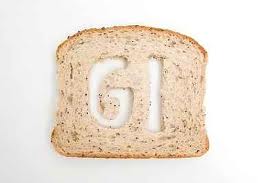
How does GI help with weight?
High blood sugar from high GI foods cause increases in the amount of insulin your body makes. Insulin helps to lower blood sugar levels after a meal but it also is important in helping your body to store other nutrients including fat. High levels of insulin encourage your body to store fat, rather than burn it. This means that when blood sugar increases it can encourage your body to store fat.
When you eat low GI foods your blood sugar level stays lower (but not too low) and so insulin stays lower and this can encourage your body to burn fat. Low GI foods are also more satisfying and help keep your metabolism running faster. This is why they are important for helping anyone to lose weight or to keep off weight they have already lost.
Which foods are low and which are high GI?
Only foods with carbohydrate can raise blood sugar levels. Any foods with no carbohydrate are low GI foods. Foods with no carbohydrate include meat, chicken, fish and eggs.
|
High GI Foods
|
Low GI Foods
|
|
• Most breads – brown or white
• Potatoes
• Cooked fruit
• Some root vegetables e.g. parsnips
• Foods high in sugar e.g. soft drinks, sweets, biscuits, cakes, etc
• Popcorn
• Crisps
|
• Porridge, high fibre breakfast cereals
• Bread made with 50% oats or more
• Pasta – brown or white
• Brown rice and Basmati Rice
• Pulses – beans, peas and lentils
• Fresh fruit, fruit smoothies
• Meat, poultry, fish, eggs
• Dairy products
• Most vegetables and salads
|
Tags: 5 a day, calories, carbohydrate, carlow, diabetes, dietitian, fat, fruit, glycaemic index, healthy eating, kilkenny, lose weight, nutrition, nutritional concepts, vegetables
Posted in General | Comments Off
Monday, May 21st, 2012
Takeaways are often cheap, convenient and satisfying but, unfortunately, they are not always very healthy. Here are some tips on foods to avoid and healthier options when ordering your favourite takeaway.
Fish and chips
- Try to avoid: thin-cut chips, pies such as cheese and onion pie or steak and kidney pie, jumbo sausage.
- Healthier options: fish coated in breadcrumbs, mushy peas, thicker-cut chips without salt.
Italian
- Try to avoid: large deep-pan pizzas, pizzas with the crust stuffed with cheese, triple cheese with pepperoni pizzas, creamy pasta sauces, garlic bread.
- Healthier options: small or medium pizza with a thin base and vegetable or lean meat topping, tomato-based pasta sauces, bruschetta.
Chinese
- Try to avoid: sweet and sour battered pork balls with special or egg fried rice, prawn toast, spring rolls.
- Healthier options: crab and corn soup, steamed dumplings, steamed vegetables and plain boiled rice, steamed fish, chicken chop suey, Szechuan prawns.
Thai
- Try to avoid: fried rice, fish cakes, spring rolls, prawn crackers, satay skewers with peanut sauce and sweet and sour dishes.
- Healthier options: clear soups such as tom yum, salads, stir-fried meat, fish or vegetable dishes, steamed seafood dishes, such as fish or mussels.
Indian
- Try to avoid: any creamy curries such as korma, passanda or masala with pilau rice, naan, bhajis, pakoras and poppadoms.
- Healthier options: tandoori or madras with chicken, prawns or vegetables, plain rice and chapatti.
Kebab and burgers
- Try to avoid: large doner kebab with mayonnaise and no salad, burgers with cheese and mayonnaise, thin-cut chips, chicken or fish patties deep fried in batter.
- Healthier options: shish kebab with pitta bread and salad, grilled burgers made from lean fish or meat (beef or whole chicken breast) and without cheese and mayonnaise.
Tags: calories, carlow, diet, fat, kilkenny, lose weight, nutrition, nutritional concepts, saturated fat, sugar, takeaway
Posted in General | Comments Off
Monday, May 7th, 2012
Today more and more of us are becoming aware of how important what we eat is to our health and well-being. There’s lots of information about the value of healthy eating but it’s often difficult to work out how much of everything we should be eating as part of a healthy diet. This is especially true of food labelling – all the facts and figures can be very confusing and sometimes hard to understand.
In this blog Sabrina will help you to decide what would be considered a low or high amount of sugar and fat? Also, when looking at food labels what do you need to focus on – do you look at the ‘per serving’ or ‘per 100g’? So here’s the general rule thumb when looking at a food label.
Firstly, do you use ‘per serving’ or ‘per 100g’?
As a guide use the serving size when that is the amount you are going to have for the whole day, for instance, a ready meal, if it’s something you are likely to have in smaller amounts throughout the day, for instance, snacks look at the per 100g.
As for if is it healthy or not…
Sugar: Try to keep sugar intake low.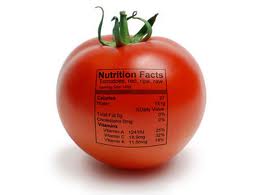
15g is high.
5g is low.
Fat: Ideally you want to keep fat intake low.
20g is high.
3g is low.
Be warned – when reading food labels there is a difference between carbohydrate and sugar. A high carbohydrate value is fine as long as the ‘amount as sugars’ value is low.
Tags: carlow, fat, food label, healthy eating, kilkenny, nutrition, nutritional concepts, saturated fat, sugar
Posted in General | Comments Off
Monday, April 9th, 2012
So it’s Easter time again! As I researched the content for this blog I came across this article on the Daily Mail website and decided to share it with you all. It’s definitely an interesting read. I hope this helps to keep you all on the right track. Enjoy!
http://www.dailymail.co.uk/health/article-382232/Easter-Eggstravaganza-Surviving-Easter-diet.html
Tags: activity, calories, carlow, diet, easter, energy, fat, food label, healthy eating, kilkenny, lose weight, nutritional concepts, saturated fat, sugar
Posted in General | Comments Off
Monday, February 13th, 2012
Valentine’s Day might mean that there is a chance you’ll be eating out. However, eating out usually means that we have little control over how the food is prepared or how large the portion is. Unlike packaged food, foods bought from cafes, restaurants etc. don’t have to carry nutritional information and so opting for the healthiest option might not always be easy. However, with these helpful tips eating out on Valentine’s Day can be both enjoyable and healthy!
General tips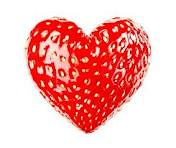
- Never arrive at a restaurant hungry!
- Think ahead, if you know you’re eating out later, choose wisely earlier in the day to keep calories, fat, sugar and salt intakes under control.
- Leave a little time for your food to digest before you order a dessert. Give your stomach time to send signals to your brain you are full (approx 20 minutes). If you still want a dessert, consider splitting it with one of your friends. Opt for sorbets, or fruit dishes to balance out a heavy main course.
- Speak up about how you’d like a dish prepared e.g. ask for no mayonnaise.
- You’re more likely to overeat at an ‘all you can eat’ style buffet.
- Choose side orders of salad or vegetables to fill up on.
- Cut off any visible fat from meat to keep saturated fat intake down.
- Look out for smaller portions i.e. a main meal option as a starter size.
- Opt for dishes which are grilled, baked, steamed, poached rather than fried.
- Check the menu for dressings on salads and ask for it to be on the side. An otherwise healthy and nutritious salad could be drowned in a high fat sauce, bumping up its calorie content.
- Avoid cheese, cream or butter-based sauces
Tags: calories, carlow, diet, eating out, fat, healthy eating, kilkenny, low fat, nutrition, nutritional concepts, portion, saturated fat, sugar, Valentine's Day, vegetables
Posted in General | Comments Off
Monday, January 30th, 2012
Golden rules to keep your skin looking youthful – the best way to do this is by choosing the right di et.
et.
Eat your 5-a-day
Fruit and vegetables contain powerful antioxidants that help to protect against the cell damage caused by free radicals, which include smoking, pollution and sunlight. Vitamin C is one of the most powerful antioxidants. It is found in all fruit and vegetables but especially in citrus fruits, red peppers and kiwi fruit. Betacarotene, found in pumpkin, carrots, and sweet potatoes, and lutein, found in kale, papaya and spinach are also antioxidants.
Cut out crash diets
Repeatedly losing and regaining weight can take its toll on your skin, causing sagging, wrinkles and stretch marks. Crash diets are often short in essential vitamins, too.
Stock up on selenium
This is also a powerful antioxidant – studies suggest that a selenium-rich diet can help to protect against skin cancer, sun damage and age spots. One way to boost your intake is to eat brazil nuts, fish, shellfish and eggs.
Drink up
Even mild dehydration will cause your skin to look dry, tired and slightly grey. Drink at least six glasses of water a day – all fluids count towards your daily allowance, but water is the healthiest.
Don’t be afraid of fat
Good fats – the type found in avocados, nuts and seeds – provide essential fatty acids, which act as a natural moisturiser for your skin, keeping it supple.
Zap up your zinc
Zinc is involved in the normal functioning of the oil-producing glands in the skin, and also promotes skin healing. Zinc-rich foods include red meat, wholegrains, wheatgerm and shellfish.
Tags: 5 a day, anti-oxidants, carlow, diet, drinking, fat, fruit, healthy eating, kilkenny, low fat, nutrition, nutritional concepts, skin, vegetables, vitamins and minerals
Posted in General | Comments Off
Monday, October 10th, 2011
When you go to college or university it may be the first time you’ve lived away from home and been fully independent. To have enough energy to study and enjoy student life to the full you need to eat regularly and healthily!
What does a healthy balanced diet really mean?
- Eat regularly and base your meals on starchy foods
- Eat lots of fruit and vegetables
- Eat a wide variety of foods

- Try to eat less salt
- Cut down on saturated fats and sugars
- Get active and try to be a healthy weight
- Drink plenty of water
- Don’t skip breakfast
Get organised
- With some planning you can eat cheap and healthy meals on a tight budget
- Make a shopping list before you go and shop
- Watch your waste – when you buy foods that go off quickly, plan your meals carefully so it gets eaten or frozen straight away
- Vary your meals otherwise you will get bored of eating and cooking the same things over and over again
What could you have in your food cupboard?
You need to stock your cupboard and fridge with easy to cook ingredients. Suggestions of meals include:
- Soups – easy to make and nutritious especially if you add a lot of vegetables (fresh, frozen or canned).
- Pasta – it’s quick and easy to cook and prepare. Keep pasta sauces in your cupboards and add your own flavours, vegetables etc. to it
- Rice – mix cooked rice with leftover vegetables and meat
- Bread is a good source of carbohydrate. Choose wholemeal bread rather than white as it is more nutritious and filling.
- Potatoes – Baking potatoes are great value and versatile.
- Porridge oats – cheap and it’s a really filling meal to start the day with. You could add some fresh or dried fruit for variety.
- Beans and lentils – cheap to buy and a small amount goes a long way! Canned varieties can make a quick and nutritious addition to soups and stews. Lentils and beans can be used as a main meal with vegetables added. Baked beans on toast is a classic and is actually a very healthy dish, especially if you use wholemeal bread, and low fat spread.
- Vegetables and fruit – can add vegetables to curries, soups, stir fries. Canned and frozen vegetables can be used as additions to last minute meals. Fruit is excellent for a quick nutritious snack. We should be eating at least 5 pieces of fruit and vegetables per day.
- Condiments – add taste and flavour to your cooking. Keep a selection of dried herbs, spices, curry powder, vinegars, tomato sauce, soy sauce and stock cubes in your cupboard.
- Tinned tomatoes – these can form the base of all sorts of sauces, are low in fat and count as a portion of your fruit and vegetables.
- Chicken – chicken seems to be of better value if you buy in larger quantities. If you’ve got a freezer you could chop it up and freeze it in small amounts.
- Eggs – are easy to cook and versatile.
- Canned fish – Mackerel, sardines and pilchards are good sources of protein and omega 3 fatty acids.
- Milk – full of calcium and vitamins and is healthy drink at any time of the day. Choose semi-skimmed or skimmed milk for a lower fat option.
Tags: 5 a day, activity, budget, carlow, college, cooking, diet, energy, fat, fruit, healthy eating, kilkenny, low fat, nutrition, nutritional concepts, saturated fat, starchy, student, university, vegetables
Posted in General | Comments Off
Monday, August 29th, 2011
Eating too much fat increases amongst other things your risk of heart disease and encourages weight gain.
Research has shown that our diet generally contains too much fatty food and that we can all benefit from eating less fat.
Instead of getting our energy from starchy foods (carbohydrates) like bread and potatoes, we rely too much on foods that are high in animal fats such as red meat, butter and cheese.
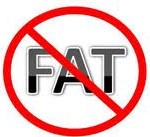
Tips for reducing fat intake:
- Choose lean meat. Trim all visible fat from meat and poultry prior to cooking.
- Choose low fat milk; choose semi-skimmed or skimmed milks.
- Choose low fat yoghurts.
- Choose low fat spread.
- Fry very occasionally using olive, sunflower or rapeseed oil. Choose grilling or baking instead.
- Beware of the hidden fats in biscuits, cakes, chocolate, pastry and savoury snacks. Always read your food labels.
- Fill up on fruit and vegetables.
- Look out for low fat snacks, low fat yoghurt and fruit.
- Use oven chips rather than fried.
Tags: calories, carlow, diet, fat, food label, fruit, healthy eating, kilkenny, lose weight, low fat, nutrition, nutritional concepts, vegetables
Posted in General | Comments Off
Monday, July 18th, 2011
- Eat fewer fried and fatty foods such as cream, butter, full-fat dairy products, fatty red meat, cakes, biscuits and takeaways – and find lower-fat alternatives instead.
- If you have to use oil, go for one that is packed with monounsaturates such as olive oil or rapeseed oil.
- Eat five servings of fruit and vegetables every day – they are low in fat and calories but will help to fill you up.
- Go for high-fibre carbohydrates such as wholemeal bread, wholegrain cereals, brown rice and wholewheat pasta. They are far more filling than the white stuff.
- Start your day with a bowl of porridge.
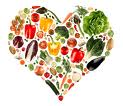
- Use a little less meat in dishes like stews, soups and casseroles and add barley, lentils or beans instead.
- Eat oily fish once a week. Lunch on sardines with toast or serve salmon for dinner.
- Slash the salt content of your diet – check salt levels before you buy.
- If you drink, stick to sensible limits – that means no more than 3-4 units a day for men and 2-3 units daily for women.
Tags: 5 a day, alcohol, carlow, diet, energy, fat, fruit, healthy eating, healthy heart, kilkenny, low fat, nutrition, nutritional concepts, portion, vegetables, vitamins and minerals
Posted in General | Comments Off











